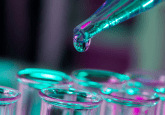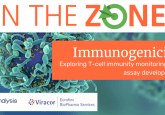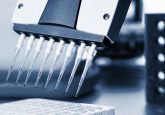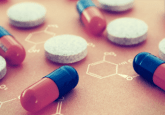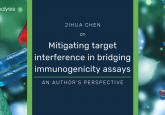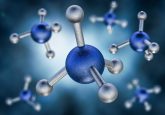Immunogenicity methods and strategies: an interview with Alex Hawes
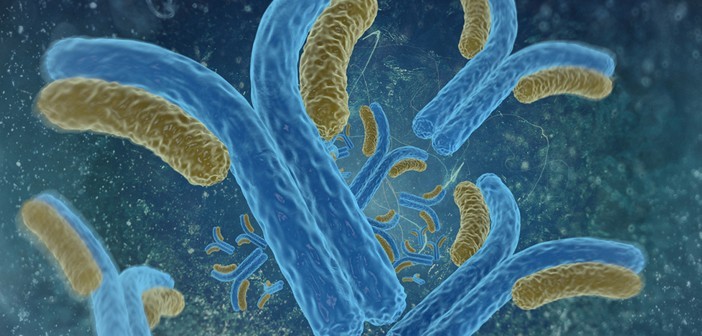
In this interview Alex Hawes (LGC; Cambridge, UK) discusses the topic of immunogenicity. She explains how she developed her first anti-drug antibody analytical method and the platforms LGC use in their immunogenicity sector. She continues to explore the challenges of immunogenicity, including the need to develop and validate immunogenicity methods as current guidelines are open to interpretation. Three top tips are also uncovered as the importance of reviewing ADA, PK and PD data is highlighted. Read the full interview below.
- Could you introduce yourself and explain what began your interest in immunogenicity?
I am Alex Hawes; I am a Principal Scientist within the Bioanalysis department, Drug Development Solutions, LGC (Cambridge, UK). With a research and development background, I joined the department in 2006 principally to develop and validate ligand binding assays for the pharmacokinetic (PK) and toxicokinetic (TK) analysis of biotherapeutics. It quickly became apparent that we also needed to develop anti-drug antibody (ADA) methods to complement the PK/TK methods. I developed my first ADA analytical method in 2007 and was hooked. I enjoy the challenge of developing the best analytical method possible with the reagents and resources available, but I also enjoy the challenge of assessing validation data and applying the appropriate statistical tests. Every biotherapeutic and analytical method presents different challenges; there is always something new to learn.
- How do you investigate immunogenicity at LGC?
At LGC, the majority of our immunogenicity methods are developed using ECLIA, usually on the MESO SECTOR S 600. Platforms using this technology are the workhorses of the immunogenicity sector at LGC. However, we have also found the AlphaLISA® format is useful in developing homogenous methods for some biotherapeutics. We are currently investigating the performance of more automated platforms, such as the Gyrolab®, with capabilities for higher throughput and reduced reagent volumes.
- What are the challenges you face when assessing immunogenicity?
As a CRO developing, validating and implementing analytical methods for immunogenicity assessments, we face two main challenges. Firstly, there is much less consensus within the industry on the approaches to develop and validate immunogenicity methods. Guidelines, recommendations and reporting requirements can be open to interpretation. It can be challenging to ensure that our Standard Operating Procedures meet current regulatory and client expectations in an area that appears to be in a constant state of flux. The second challenge we face is in developing robust analytical methods, which meet the required specifications and managing the critical reagents for those analytical methods. The requirements for analytical method performance, in terms of sensitivity and tolerance to the biotherapeutic, are more challenging to meet than they were, even 2–3 three years ago. Personally, I find a significant proportion of analytical method development is allocated to achieving the required tolerance to drug in controls with very low positive control levels. Critical reagent management is vital to the performance of ADA methods that can be in use over many months and years. Critical reagents need to be identified at the method development stage and any change in batches carefully managed to ensure there has been no shift in sensitivity, drug tolerance or the underlying distribution of the data.
- How does LGC’s portfolio of services help with these challenges?
Drug Development Solutions sits within the Health Science & Innovation division of LGC. There is a diverse pool of scientific knowledge and experience to call upon, if required. LGC scientists, management and business development managers regularly attend conferences and focus meetings in the area of immunogenicity to keep up-to-date with regulatory expectations. The good working relationships and partnerships we have built up with a diverse client base also means we are exposed to a wide range of feedback from the regulatory agencies.
The wide range of experience and knowledge developed by our scientific teams is invaluable in delivering robust, fit-for-purpose analytical methods. Within bioanalytical analysis, we have a dedicated immunogenicity sector. We are building up a strong team of scientists and project managers who specialise in the delivery if immunogenicity projects. Within the sector we are continually striving to improve processes and share knowledge and experience.
- What are your top three tips for studying immunogenicity?
My top three tips for studying immunogenicity are:
- Remember that the data from immunogenicity assessments can never be reviewed in isolation. ADA, PK and PD data all contribute to the information we have for a sample or patient profile.
- When a method is challenging to develop and frustration is creeping in, I always find it helpful to think of the bigger picture. Ultimately, we are all working towards improving people’s health and quality of life.
- Keep an open mind. It doesn’t matter how many analytical methods you have developed. Each novel assay system can throw up unexpected challenges. Don’t dismiss the suggestions of colleagues or clients based on previous experiences.
- Where do you hope this field will be in 5–10 years’ time?
In 5–10 years’ time, it would be great to have industry and cross-agency regulatory consensus on expectations for method development, validation and reporting terminology for immunogenicity. More guidance on the expectations for neutralizing antibody assays would also be welcome. I would hope that, as a field, we would be able to have a period of relative stability. I do think, however, that the biotherapeutics we work with may be more diverse and, who knows, perhaps we will be developing personalized therapies and personalized immunogenicity methods for each patient.

